Categories > Guides and Tips

Why Does Bangkok Smell?
- What is that distinct smell in Bangkok?
- Smelly Local Food Items in Thailand
- Kao Neaw Durian
- Pla Kem
- Tao Jeow Lon
- Som Tam Pla-Ra
- Kao Klook Gapi
- Pad Sa Tor
- Some Good “Smells” in Thailand
- What are Thais doing to address that infamous Bangkok smell?
- Private individuals commonly sniff on Ya Dom.
- The Thai Government acts against smelly canals.
- FAQs about that Bangkok Smell
Bangkok is notorious for its unpleasant smells, thanks to a number of factors such as smelly local cuisine and a problematic sewage system.
There are some things that people can do to help minimise the smell. But in general, Bangkok is still a smelly country.
People living in Thailand may have gotten used to the different smells of their country despite their adverse effects on the general quality of life.
However, tourists may be shocked when they first encounter these different aromas wafting around as they walk through the streets of Bangkok.
In this article, let’s look at why Bangkok smells, what factors are causing the stink, and what Thais are doing to address the issue.
What is that distinct smell in Bangkok?
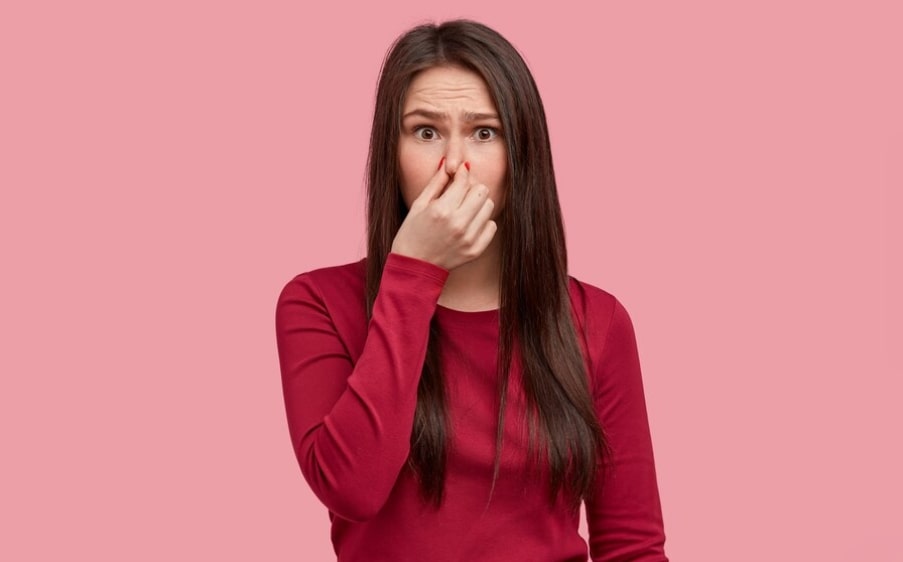
To be fair, other big cities may have their own distinct smells that tourists may find “smelly” or “stinky”. The same is true for Bangkok!
Travellers can encounter unique smells that they will immediately find alien or strange. However, this depends on where they are located in the country or city.
Tourists entering Thailand usually pass through two airports – Suvarnabhumi and Don Muang. Once they are in the said airports, tourists will smell jet or aviation fuel, until such time that they transfer to the taxi or bus area where they will then smell burnt fuel.
Based on where guests will be staying, they will be treated to different smells in Thailand.
These varied scents are mostly due to the food items being sold in the different areas of Bangkok. In particular, such areas include the downtown Banglamphu and the upmarket Silom and Sukhumvit hotels.
Food smells in Banglamphu are prevalent, thanks to the many unique dishes being prepared here. The sources of these aromas include fish heads being fried in stalls, chicken feet being cooked, and stalls selling one of the smelliest fruits on earth, Durian.
On the other hand, Silom and Sukhumvit have very expensive hotels that are usually well-run and kept fresh and clean. As such, the said properties have very hygienic and well-maintained kitchens that rarely have the smell of cooking food on them.
Tourists who choose to wander the food markets of Bangkok will experience an all-out assault on their sense of smell. These markets are commonly poorly ventilated and will normally have around 60 dishes being cooked at the same time.
In addition, waste management isn’t a top priority in these parts as excess oils and food are disposed of in the gutters and drains beside the tables of the food stalls themselves.
This kind of waste disposal results in the accumulation of dirt, detritus, rats, and vermin around the area.
Unfortunately, this poor approach to waste management by these food stall owners often leads to smells that are quite offensive and disgusting to first-time travellers in Thailand.
Smelly Local Food Items in Thailand
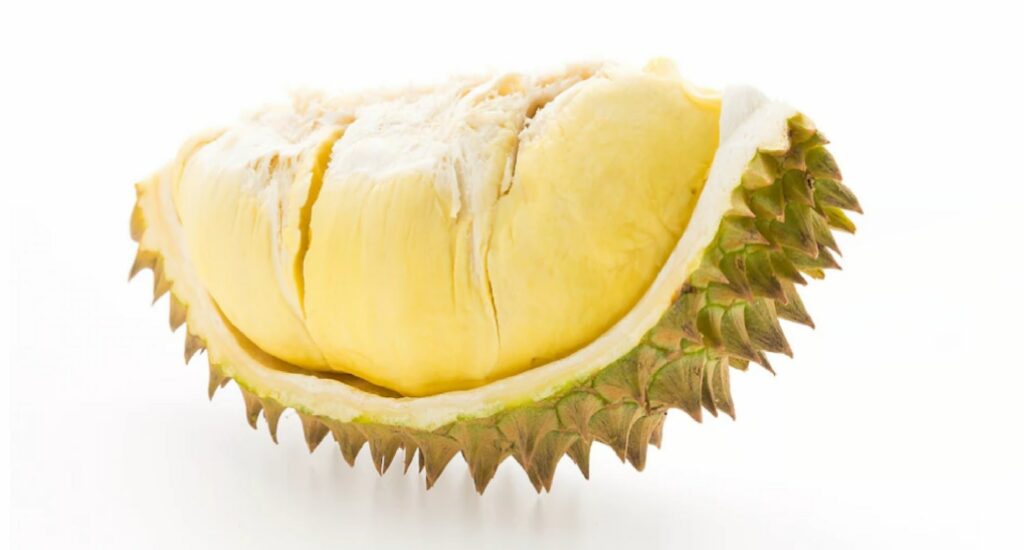
As stated in the previous section of this article, one of the major contributors to the distinct smell of Thailand is the local cuisine or food items sold in and around the country including Bangkok.
Some travellers may even pass up on the experience of trying these smelly food items because of the unpleasant aroma they possess. But despite their unpleasantness, these local cuisines are in reality quite delicious!
Below are some of the dishes that tourists shouldn’t judge based on their stinky smell and that we recommend they try out if they are brave enough to stomach their smell, that is!
1. Kao Neaw Durian
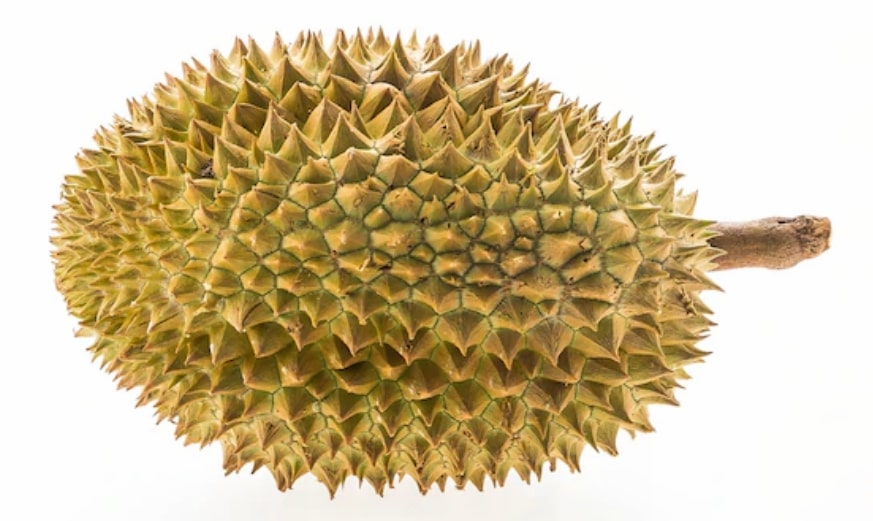
This Southeast Asian fruit gets a very negative image for being the world’s most unpleasantly smelling fruit in the world. In fact, there is no grey area when it comes to liking the durian fruit as you only really hate it or love it.
There is one way to enjoy this stinky fruit, though, and it is in the form of Kao New Durian. This Thai dessert recipe involves serving durian with sticky rice and coconut milk.
Health buffs may also be glad to know that the durian fruit is good for you as it has high iron content, and is rich in vitamins E, C, and B.
Durian also has tryptophan, an amino acid that can help improve feelings of happiness and alleviate insomnia, depression, and anxiety.
While it is recommended that travellers try durian out, we would recommend keeping it out of refrigerators, public transportation, and air-conditioned areas. This is because the smell of durian can stick around for days.
2. Pla Kem
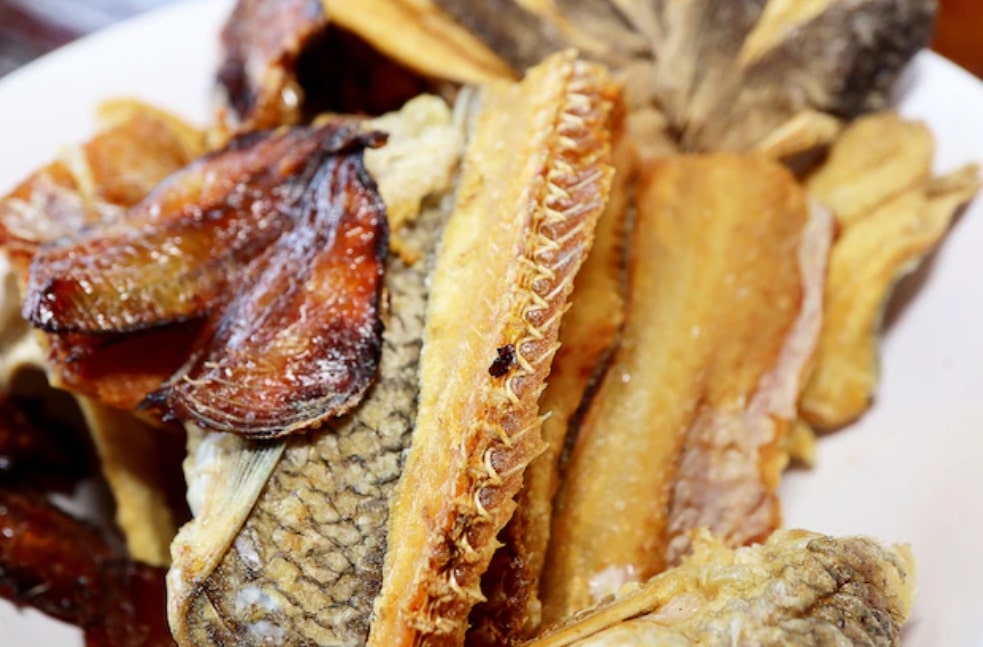
In Thailand, they have sun-dried salted fish called Pla-Kem. Unfortunately, this salted fish cuisine isn’t just stinky right before it’s cooked as it still gives off that stinky stench even as it goes into the frying pan or stove.
Eaten with a side of boiled rice, Pla Kem is commonly topped with some chilli, shallots, fish sauce, and some lime juice. Since the majority of Thais want their meals to burst with flavours, this combination adds a kick to the flavours of Pla Kem once served.
In Bangkok, Pla Kem can be bought or purchased in restaurants, supermarkets, and markets. However, these sun-dried fishes are commonly found near coastal towns as Pla Kem is mostly made using fish forms salt-water sources.
3. Tao Jeow Lon
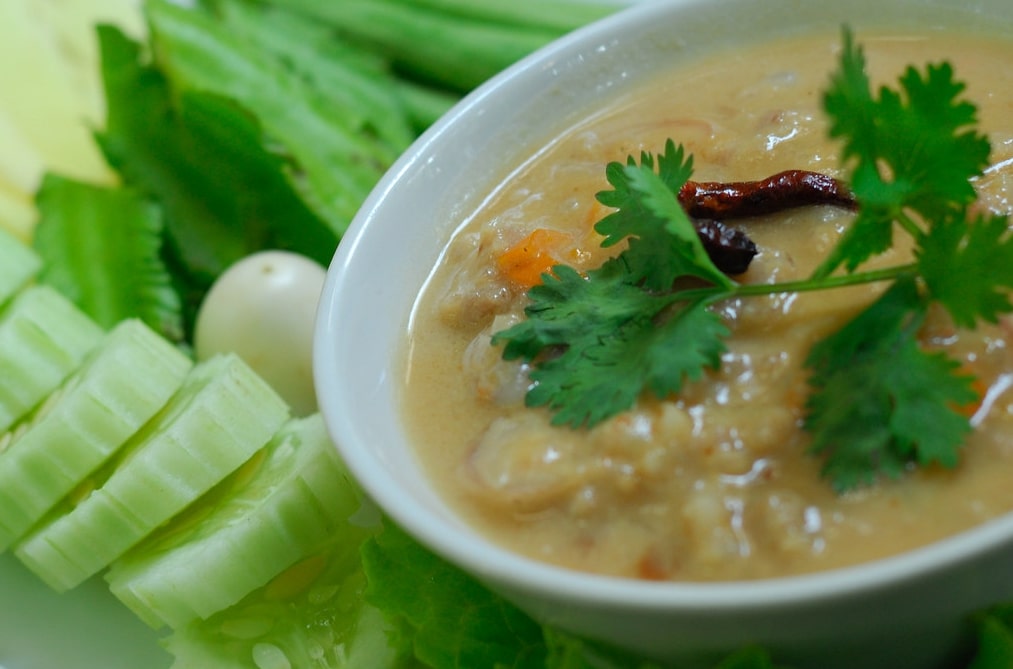
Tao Jeow Lon is not a dish per se but a sauce used for dipping made with chilis, coconut milk, and some fermented soybeans. This dipping sauce isn’t very visually appealing as well since it resembles regurgitated baby food.
Nonetheless, countless people and locals love this dipping sauce for its nutritional benefits and the satisfying and strong taste it adds to various Thai dishes. Most Thais love to eat Tao Jeow Lon with some hot rice and some boiled or fresh vegetables.
Those who like and who will fall in love with Tao Jeow Lon are in luck as this dipping sauce is really easy to prepare and is available in almost all restaurants and markets in Bangkok.
4. Som Tam Pla-Ra
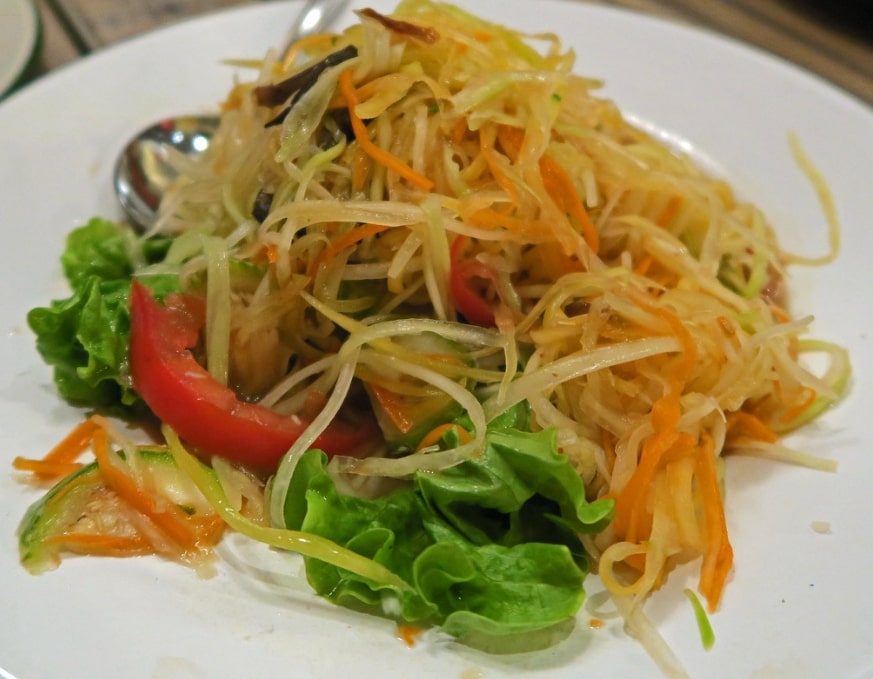
Do you fancy eating some exotic salad? Then the Thai cuisine called Som Tam Pla-Ra may just be what you are looking for.
This salad is prepared using fermented fish and the smelliest kind of spicy papaya. Locals usually prefer that their Som Tam be prepared only with some fermented fish but there are some who would prefer to have an entire fish thrown into the salad.
Others go the extreme route though and even throw in some field crabs into their Som Tam Pla-Ra.
Regardless of how this salad is enjoyed, it is best eaten with other local side dishes such as spicy liver salad, ground pork salad, grilled pork, fried or roasted chicken, rice noodles, or sticky rice.
5. Kao Klook Gapi
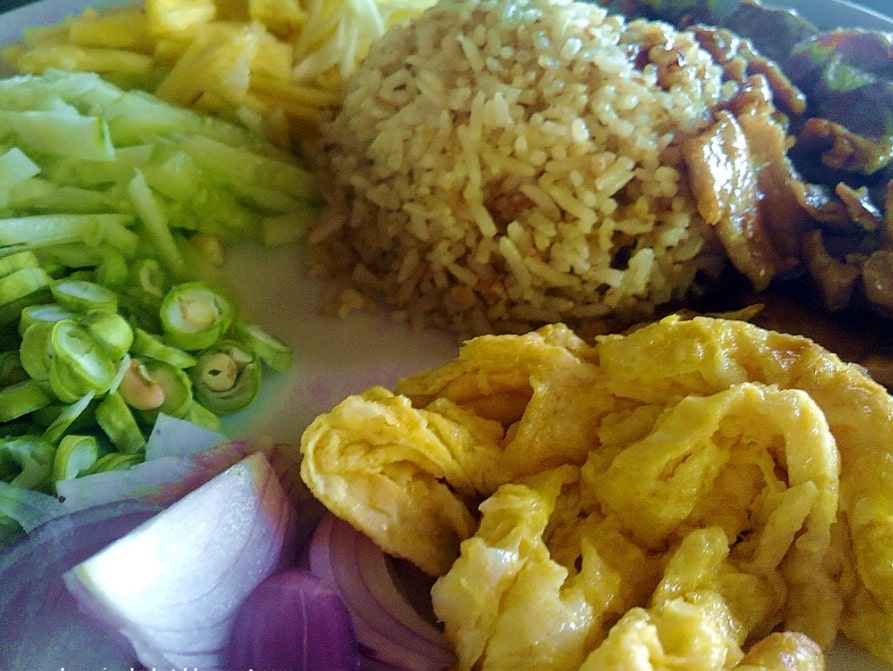
Combining shrimp paste and rice will get you the smelly local dish known as Kao Klook Gapi. The dish’s name is a literal translation of rice (Kao), mix (Klook), and Gapi (shrimp paste).
Locals eat Kao Klook Gapi with other food items such as parboiled eggs, acacia or cha-om omelette, and fried mackerel. A lot of Thais enjoy the flavour of this dish but this food item is also thought of as highly nutritious.
This is mainly because Kao Klook Gapi contains a full set of nutrients all in one dish. However, tourists should be aware that after eating Kao Klook Gapi, they may need a breath mint and deal with the spicy flavour that it can leave in one’s mouth after eating.
Aside from different side dishes, locals also enjoy Kao Klook Gapi with some unripe mangoes. People can easily get this local cuisine from any Bangkok restaurant or market.
6. Pad Sa Tor
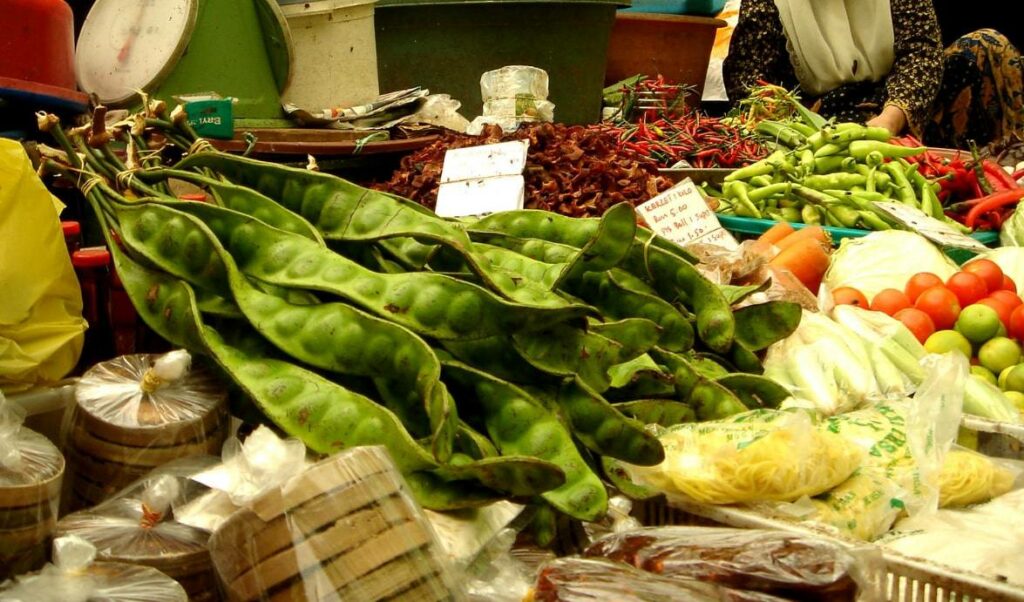
Stink beans, also known as Sa Tor, are beans stir-fried with either shrimp, beef, pork, or chicken and some chilis. It may smell like someone just passed gas but locals are in love with this dish for its health benefits and its fantastic flavour.
A number of studies showed that stink beans can positively impact the prevention and management of constipation, depression, PMS, anaemia, obesity, blood pressure, and diabetes.
Usually eaten with some rice, Pad Sa Tor can be purchased from most markets in Bangkok. However, it can’t be easily found in upscale and city restaurants as it is considered a dish that is country-style.
Some Good “Smells” in Thailand
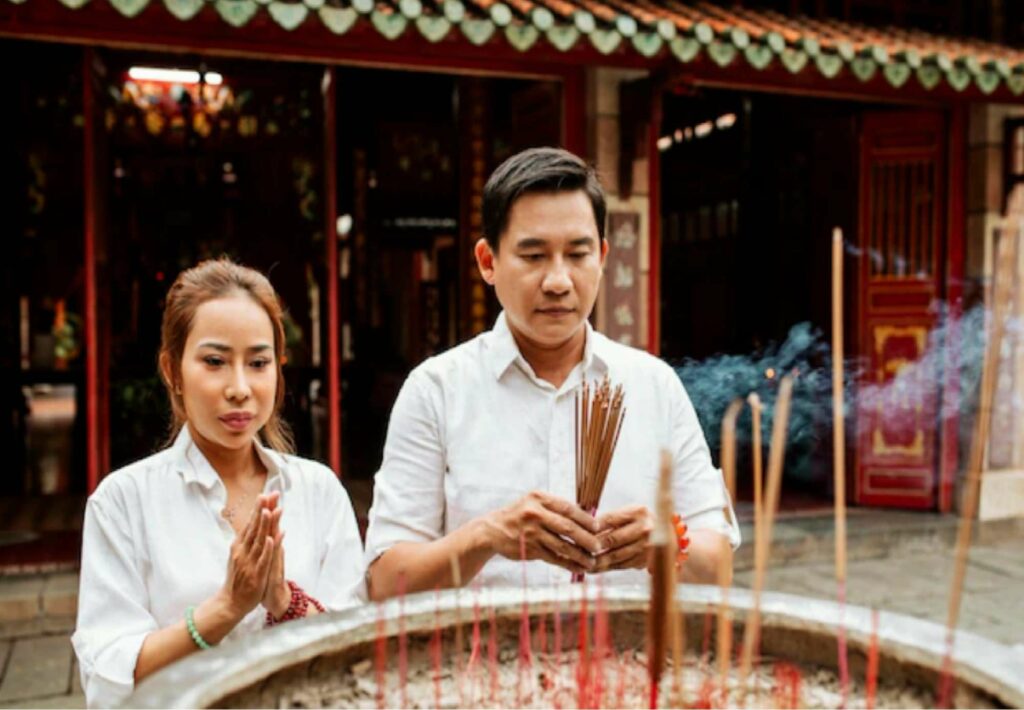
Of course, not all smells in Thailand or Bangkok are bad. In fact, there are some that are considered good smelling or even fragrant.
Tourists who visit any of the temples or the “Wats” will immediately take note of the smell coming from the sticks of incense offered to the Buddhas. These incense sticks help relieve stress and also make the area much more fragrant.
Some countryside night markets provide sweet and delightful aromas when preparing dishes for the locals and tourists. Guests will surely have their appetites stoked once they smell the fish, fried rice, grilled meats, and soups being prepared in these markets.
Spice vendors and stores can be found all around Thailand and tourists will surely fall in love with the different fragrances and colours offered on display by these traders. In fact, these vendors offer what one might call an authentic Thai experience.
Lastly, Thailand is rich in fragrant trees and flowers and these certainly bring about a fragrance that tourists can appreciate. One such flower is the Ylang Ylang, also known as the Canang odorata.
The Ylang-Ylang has a wonderful fragrance and is claimed to awaken the secret desires, passion, and love in humans. Another popular and fragrant flower is Frangipani which seems to be a crowd- favourite for most tourists
What are Thais doing to address that infamous Bangkok smell?
Both private individuals and the Thai government are doing or planning to do something to address the negative smells in Bangkok. Below are some of the said actions:
1. Private individuals commonly sniff on Ya Dom.
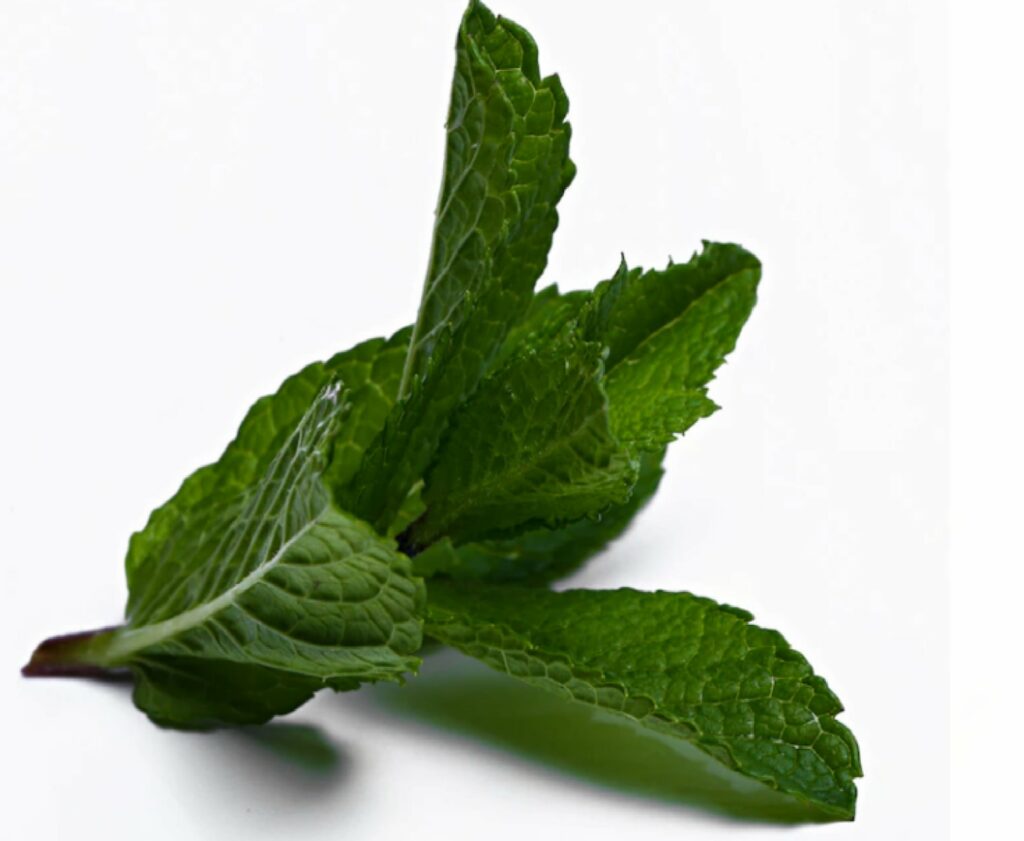
Once tourists get off their planes and head out to Bangkok, they may notice that a lot of locals carry little white tubes. While they may look like Chapsticks, these white tubes are being sniffed by Thais making it clear that it is not lip balm.
These small white tubes carried around by locals are called Ya Dom and they can make the days of locals a little bit easier when it comes to bad smells.
These tiny inhaler tubes have in them something fragrant or pleasant-smelling such as peppermint, eucalyptus, menthol, or something similar.
Sniffing long and deep on a Ya Dom can provide individuals with instant relief from the nasty smells in their immediate surroundings. In fact, Ya Dom can be compared to Vicks Vaporub which can provide immediate relief from congestion once sniffed.
Fortunately, travellers can easily purchase Ya Dom from any of the many convenience stores around Thailand and Bangkok. Once you have your little white tube with you, touring the country and the city will be much more pleasant.
2. The Thai Government acts against smelly canals.
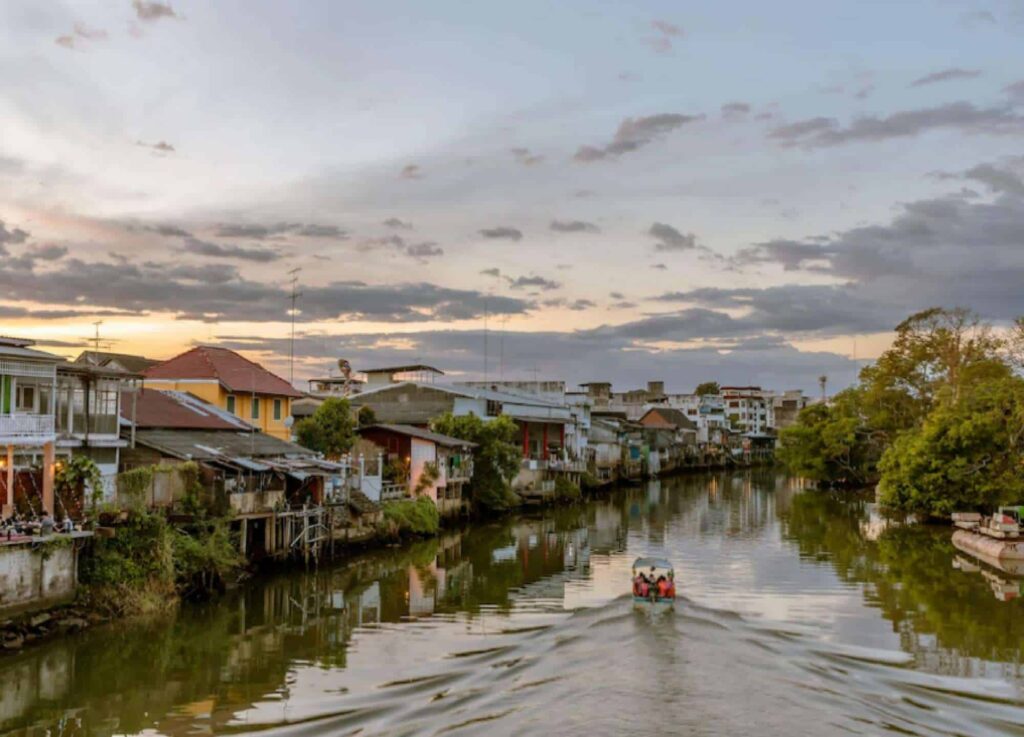
The Thai Government has acknowledged the need to address the untreated wastewater passing through the subterranean tunnels of Bangkok. These waft through the city’s sewage grates, resulting in that horrible smell that only gets worse during summer.
As such, the Prime Minister of Thailand wants to resolve the issue of making the waterways of Bangkok a little less smelly.
One such example of improving waterways is the Ong Ang canal which was formerly identified as the stinkiest canal in Bangkok. The situation of the said canal, though, greatly improved after half a decade of beautification projects were implemented.
Fortunately, it seems like the Thai government is now much more focused on resolving this issue and is poised to address the two problems that contribute to Bangkok’s smelly waterways namely flooding and sewage.





